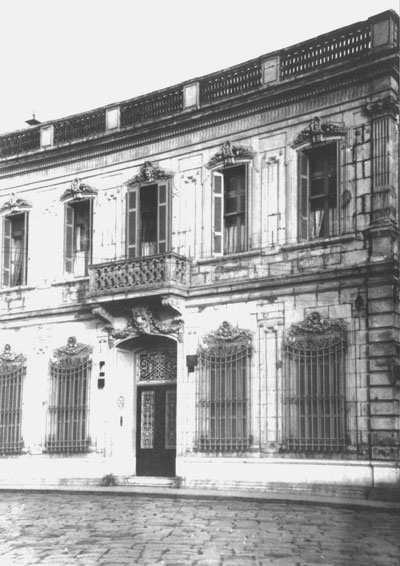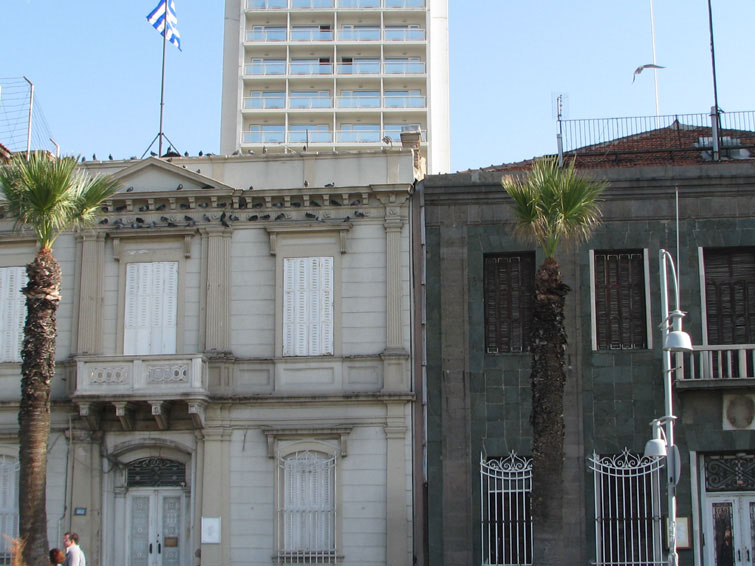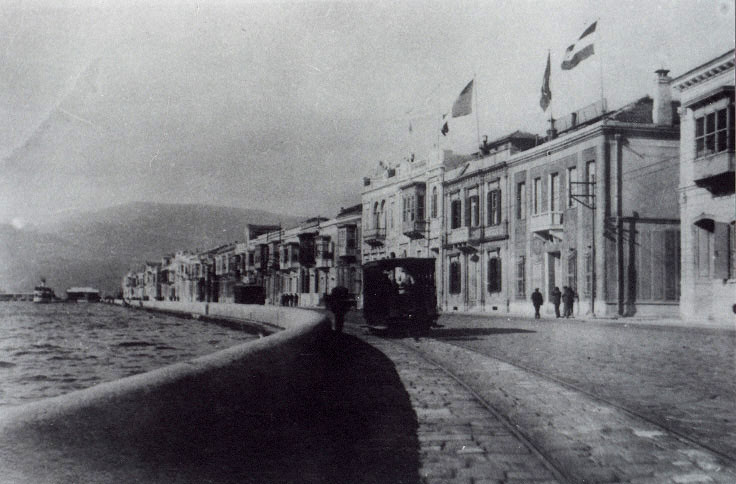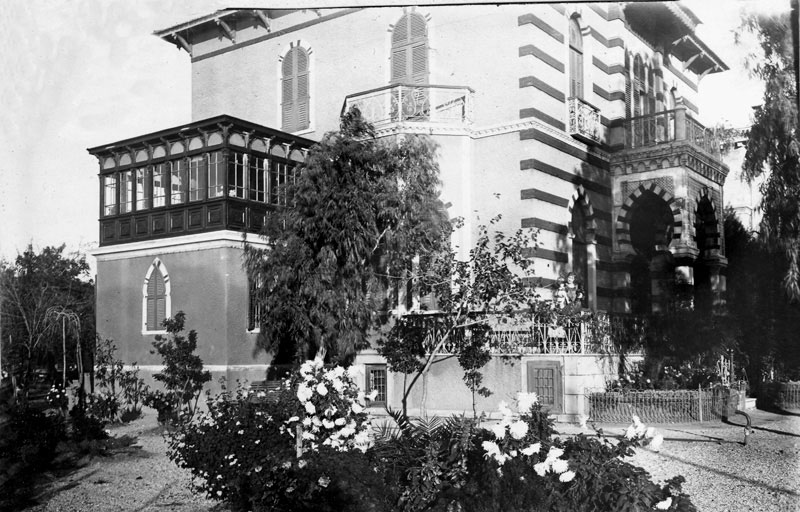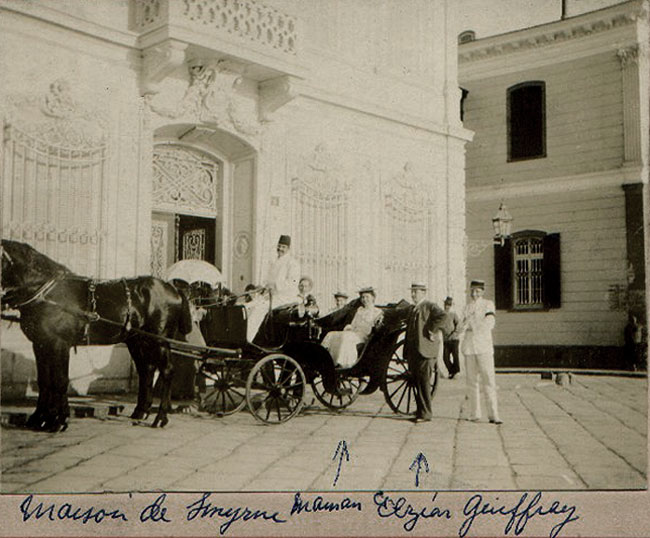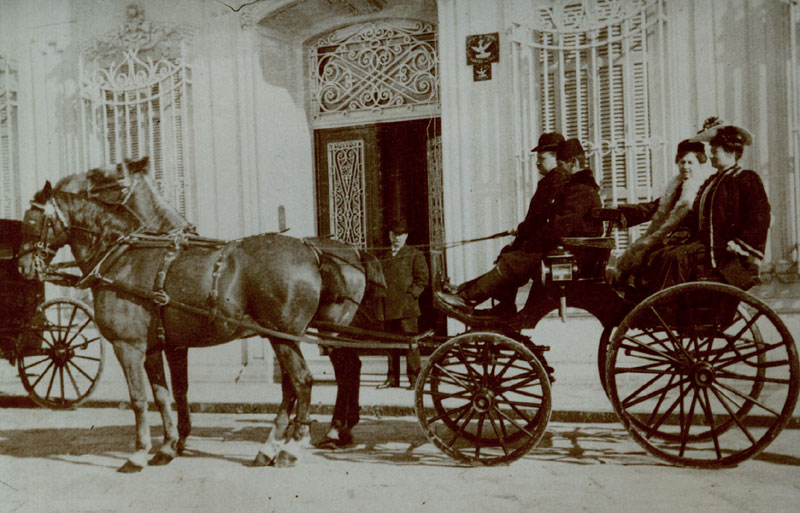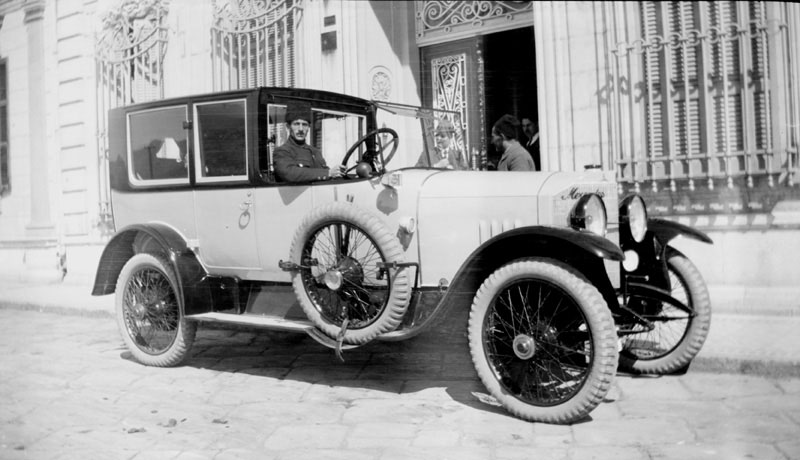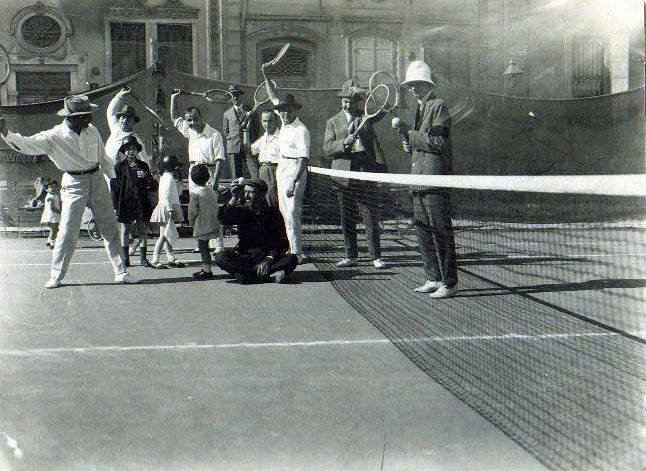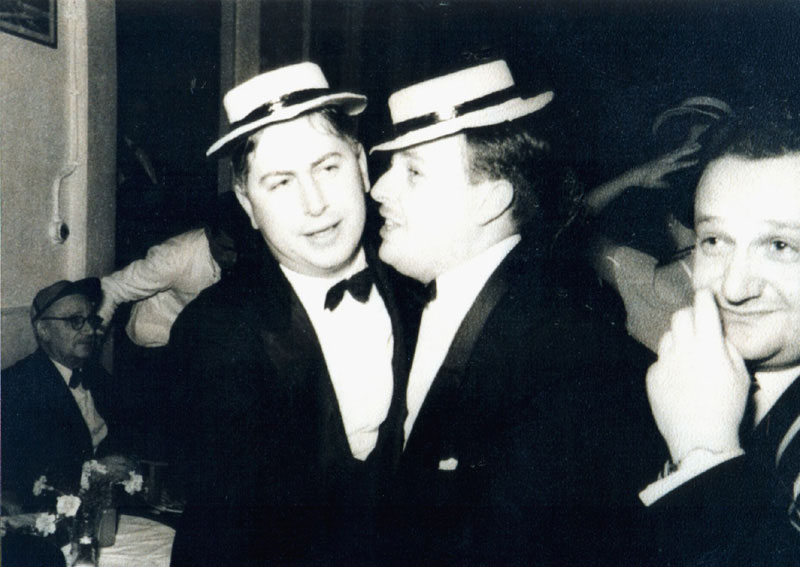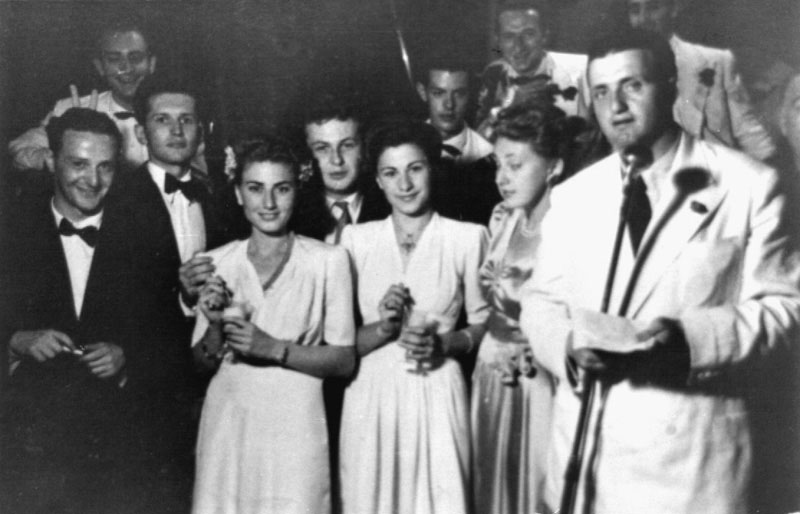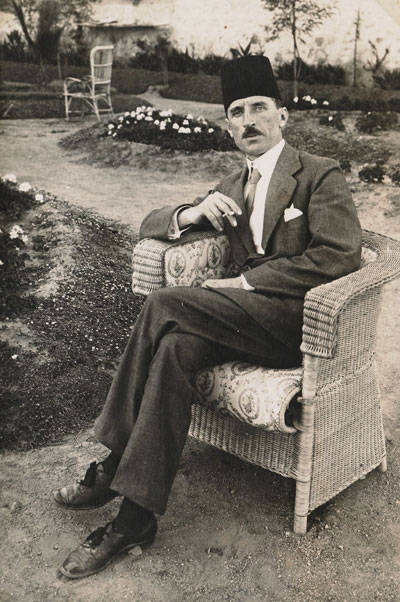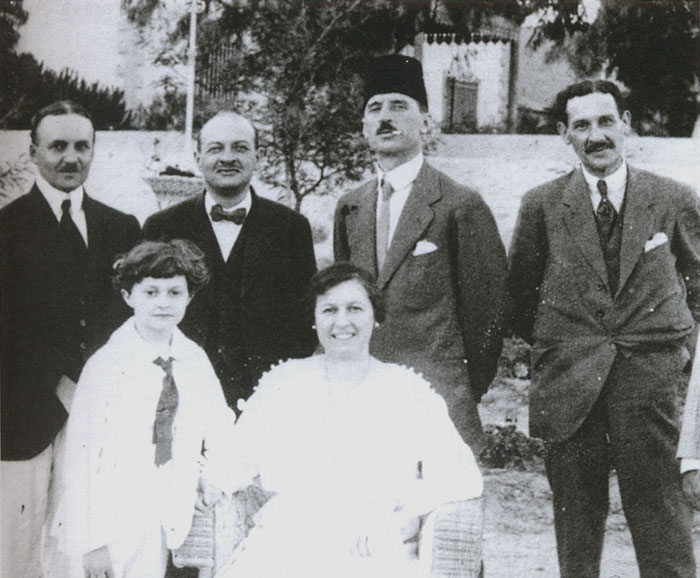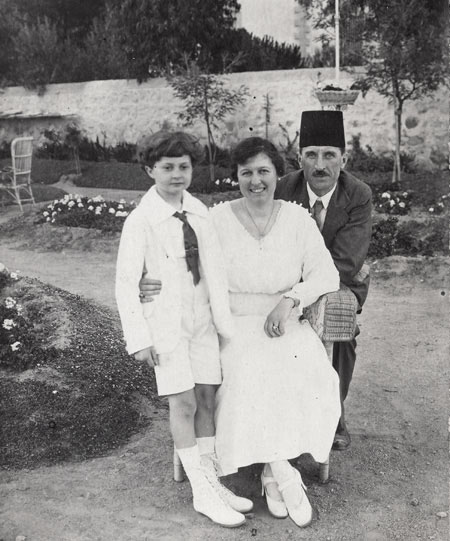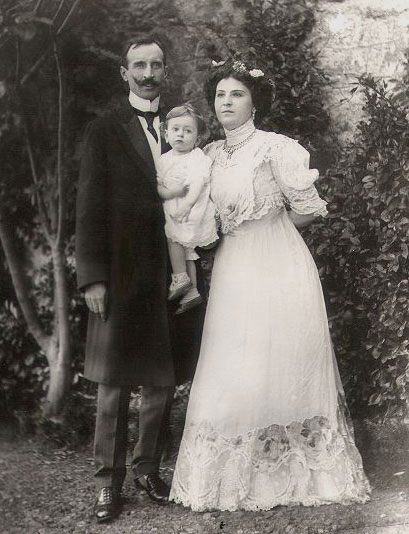|
The Elzéar Guiffray house on the sea-front of ‘Bella Vista’, Izmir as it used to stand, sold to the German Government post 1918, presumably as a replacement of their building destroyed in the 1922 fire. The facade of the building was radically altered, as shown below, and this building served as the German Consulate until around 2005, next to the still functioning Greek Consulate on the left. |
|
|
The house has already been modified and the German flag looks like the Weimar Republic’s one. So the photo is likely to be of the early 30s. The horse tramway is still running... |
|
The former Fernand Guiffray house in Cordelio. Fernand was the brother to Elzéar, son of Elie and husband to Agnes. This building stood on the waterfront in the vicinity of the present day Akkum appartment. Fernand Guiffray (1882-1942) was the manager of the Quay Horse Tramway Company until the early 1920s, then he retired at Buca, where he died. His wife Agnes nee Werry was the daughter of William Werry, and continued living there until she died there around 1969. |
|
The house was used mainly by Elie Guiffray (1849-1926) who was the first of the name who came to Izmir - and later by his son Elzear. He remained there until 1913 and retired to France. Before WWI his granddaughter Eliane (1904-1967) and grandson Yves (1905-1944) also lived in the same house. I was told that during the Great War, the house remained unoccupied, while Elzear (1878-1930) his wife and their son Marcel (1909-2002) were living in the house next door, which is now the Greek Consulate. As a matter of fact, Eliane and Yves had been blocked in France with Elie in the summer of 1914 and did not come back to Izmir until 1919. Marcel and his friend Eliane Guys used to explore Elie’s empty house during that period but they were not allowed to touch the toys belonging to Eliane and Yves - information courtesy of descendant, Patrice Guiffray. |
|
Elie Guiffray standing before the front door. The two horses were imported from Hungary and Elie was very proud of them. Sitting in front: the driver with a fez, and Elzéar Guiffray (the family used to call him “Elzé”); sitting in the back Jeanne Guiffray (facing, nee Aynaud, 1881-1962) wife of Elzear, and Claire Guiffray (in dark), sister of Elzear. The wife of Elie Guiffray was Reine nee Baudouin 1851-1927 (not on this picture). |
|
The Mercedes-Knight Landaulet car belonging to the Elzear Guiffray in the 1920s. This picture as well as the above earlier pair (pre 1914) were all taken outside the front entrance of the Guiffray house in Punta. This vehicle was produced in 1919. The engine had no valves which made it very silent. Yet it could not run at high regimes so the speed was limited. The car had initially been ordered for the King of Greece. The unique photo I could find recently on the net show that the colours of the car were yellow and black -
|
|
Marcel Guiffray in the pith-helmet, on the tennis-court. |
|
Zizi Missir (real name: Norbert Missir born in 1922, the son of Norbert Missir & Taddea Rozowska) and André Verbeke (born in 1924, was the son of Maurice Verbeke and Eliane Guiffray daughter of Elzear Guiffray and Jeanne Aynaud) - image of the Verbeke house. |
|
Zizi Missir (on the extreme left in dark suit) and his orchestra, late 1940s Izmir. In the middle of the picture, between the two ladies, with a tie, stands possibly my cousin André Verbeke (information courtesy of Patrice Guiffray). |
|
|
The governor of Izmir, Rahmi Bey. |
|
|
The mayor of Izmir during WWI period was Rahmi Bey, who is featured in this photograph dating from 1918 with a cigarette in his mouth. Here he is in the garden of the M. Xenopoulo, probably in his property in Turan, and also featured here are from left standing, the French naval commander Rollin, next Elzear Guiffray and on extreme right M. Xenopoulo. Seated are Marcel and his mother Jeanne Guiffray. Commandant Rollin was from the French navy and was in command of a vessel that was part of the blockade of Turkish ports, was wounded, made prisoner, and was authorised to stay with Elzear Guiffray and promised not to attempt escape against his officer’s word. It is ironic that Rahmi Bey alongside all high officials considered to have worked for the Ottoman Government was later to be sent by the British to Malta for confinement - details: |
|
|
Clearly taken on the same day, same location, the annotation on the side of the photo reads ‘... chez Xenopoulos à Baïrakli’, which could place it either there or its satelite neighbourhood of Turan? |
|
Rahmi Bey, with his wife Nimet and their baby Alp, who would later be abducted by bandits. Alp remained in captivity for twenty-three days. The bandits were demanding an exorbitant sum - 53,000 gold coins - and it took time to raise the money. However, the Whittalls and the Girauds were eventually successful in buying back Arslan’s freedom. When he returned he was carrying the dagger and jewel-encrusted girdle of Cerkez Ethem - gifts of the bandit. They remain in the family’s possession to this day. Caption aids courtesy of Patrice Guiffray, Alex Baltazzi, Marie-Anne Marandet and Mark Wilson - genealogical information on the Guiffray family - a 1934 Izmir guide from the family archives: |
